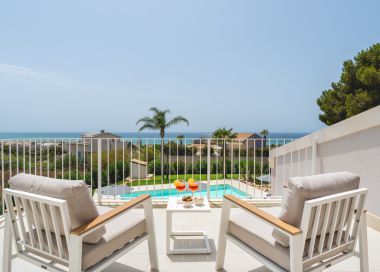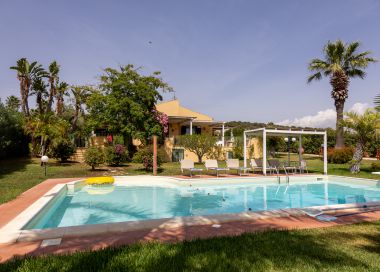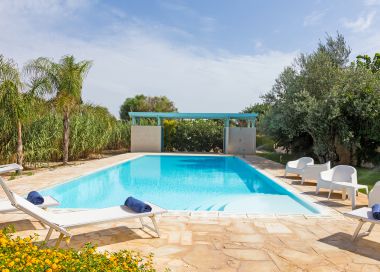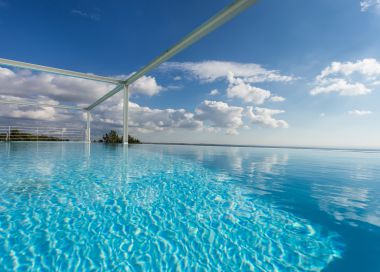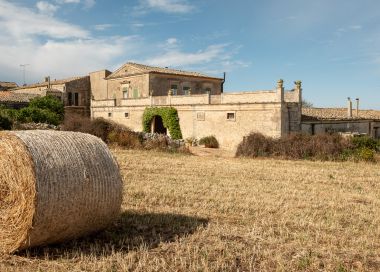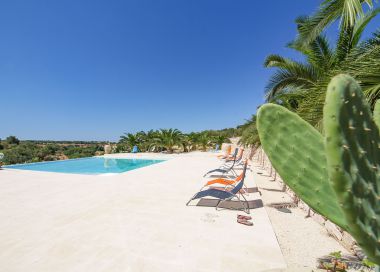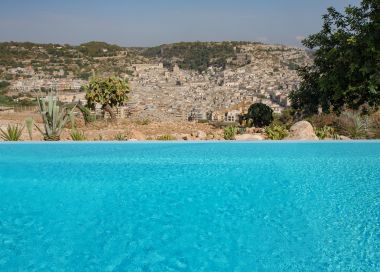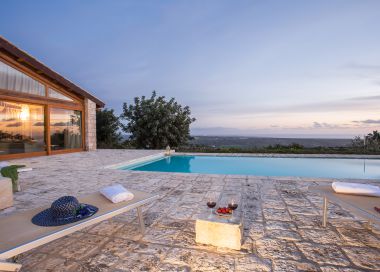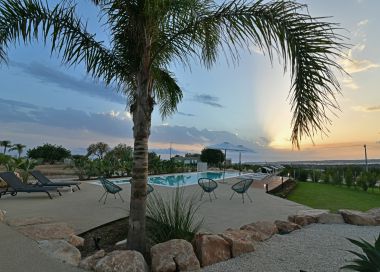Scicli
Scicli, the town embedded in between valleys
In 1955, in his book Le Città del Mondo, the writer Elio Vittorini described it in these words: "... During one of those years which had seen us, men of today, as young lads or little kids, one late March afternoon, there was a shepherd in Sicily who entered the territory of the town of Scicli with his own son, around fifty sheep, a dog and a donkey. This town lies at the crossroad with three valleys, with houses on all sides up on its steep slopes, a large square at the bottom across a stream bed, and old church buildings that surround several sides like baroque acropolis, a semicircle of altitudes. It is situated at the south-east tip of the island, and who arrives from the mainland finds it suddenly at his feet, joyous with its mushroomed roofs, magpies and bells pealing; while who reaches it from the close seashore, spots it while nestled around ten thousand black windows covering the height of the mountain, between twisting threads of smoke, and here and there the glimmer of an open or close window, suddenly, against the sun... But what is it? - he asked - Is it Jerusalem? He had blue sparkles in his eyes that prevented him to discern his dad's faces. He heard him answering anyway: "I don't know what kind of city this is." With these words, he had not said that this could not be the City par excellence: "Jerusalem, or call it another name... How must these people be happy in this city!..." Indeed, Scicli extends itself along a large plain embedded in between three narrow and cut-through valleys called “Cave” (the valleys of Modica, Santa Maria La Nova, and San Bartolomeo), which originated from tectonic fractures of ancient times later transformed into waterbeds of torrential streams. Human presence in the territory of Scicli dates back extraordinarily to the Eneolithic era, as the archaeological finds at Grotta Maggiore (a cave situated near the Busacca hospital) show, which date between the Copper and the Early Bronze Age (III-II millennium BC to XVIII-XV century BC). Scicli was dominated by various civilizations: the Arabs, under whom it experienced a period of great economic and agricultural growth; the Normans, under whom it became a city controlled by the Crown, a privilege granted only to very few cities in Sicily; the Aragonese, under whom it became a County to be later ruled by a number of noble old Sicilian families until 1860 (during the time of Garibaldi) when, through plebiscite, it was annexed to the territory of Piemonte. Through a gradual landscape evolution from hill to plain, Scicli took its present topographical shape between the XIV and the XVI century. Its population had notably increased, but the 1626 plague reduced it to almost two thirds, from 11000 to 4000 people. After the plague, and thanks to some economic incentives to the people who decided to reside in the town, Scicli went through a new demographic growth but the terrible earthquake in 1693 caused the death of 3000 people, as well as the destruction of a large part of the town. Scicli was born again out of the rubble as a baroque town, that is famous today for its numerous eighteenth-century structures, among which are Palazzo Beneventano, built in the XVII century in baroque style, and one of the most beautiful palaces in the whole of Sicily; Palazzo Fava and Palazzo Spadaro; some other important churches, such as the Church of San Matteo, the Church of San Bartolomeo, built in the XV century and storing a beautiful wood Christmas crib, the Church of San Giovanni Evangelista, and the Church of San Maria la Nova, the latter of very ancient Byzantine origins. Together with the churches and the 4 monasteries, these palaces represent the beauty of this splendid town. Scicli has been included by the UNESCO in the World Heritage List since 2002.
But Scicli offers the visitor who strolls around its narrow streets the opportunity to relax him/herself while enjoying a “cannolo” or a “granite” in one of its famous cafes, or to rest in one of its old eating houses (“trattorie”) in the city centre, savouring a range of traditional dishes prepared with local fresh produce. Scicli’s surroundings offer one of the most scenic stretches of Sicilian coast, with a few kilometres of golden sandy beaches between Donnalucata and Sampieri, a few sections of which belong to some environmentally preserved natural areas, such as the mouth of river Irminio.
Among the festivals and the annual events in Scicli, we signal “The Feast of the Militias” at the end of May, that enacts a representation of a battle between the Saracen Turks and the Christian Normans occurred in 1091, and “The Joy”, during Easter Day when the resurrection of Christ, “the living man,” is celebrated.
But Scicli offers the visitor who strolls around its narrow streets the opportunity to relax him/herself while enjoying a “cannolo” or a “granite” in one of its famous cafes, or to rest in one of its old eating houses (“trattorie”) in the city centre, savouring a range of traditional dishes prepared with local fresh produce. Scicli’s surroundings offer one of the most scenic stretches of Sicilian coast, with a few kilometres of golden sandy beaches between Donnalucata and Sampieri, a few sections of which belong to some environmentally preserved natural areas, such as the mouth of river Irminio.
Among the festivals and the annual events in Scicli, we signal “The Feast of the Militias” at the end of May, that enacts a representation of a battle between the Saracen Turks and the Christian Normans occurred in 1091, and “The Joy”, during Easter Day when the resurrection of Christ, “the living man,” is celebrated.








